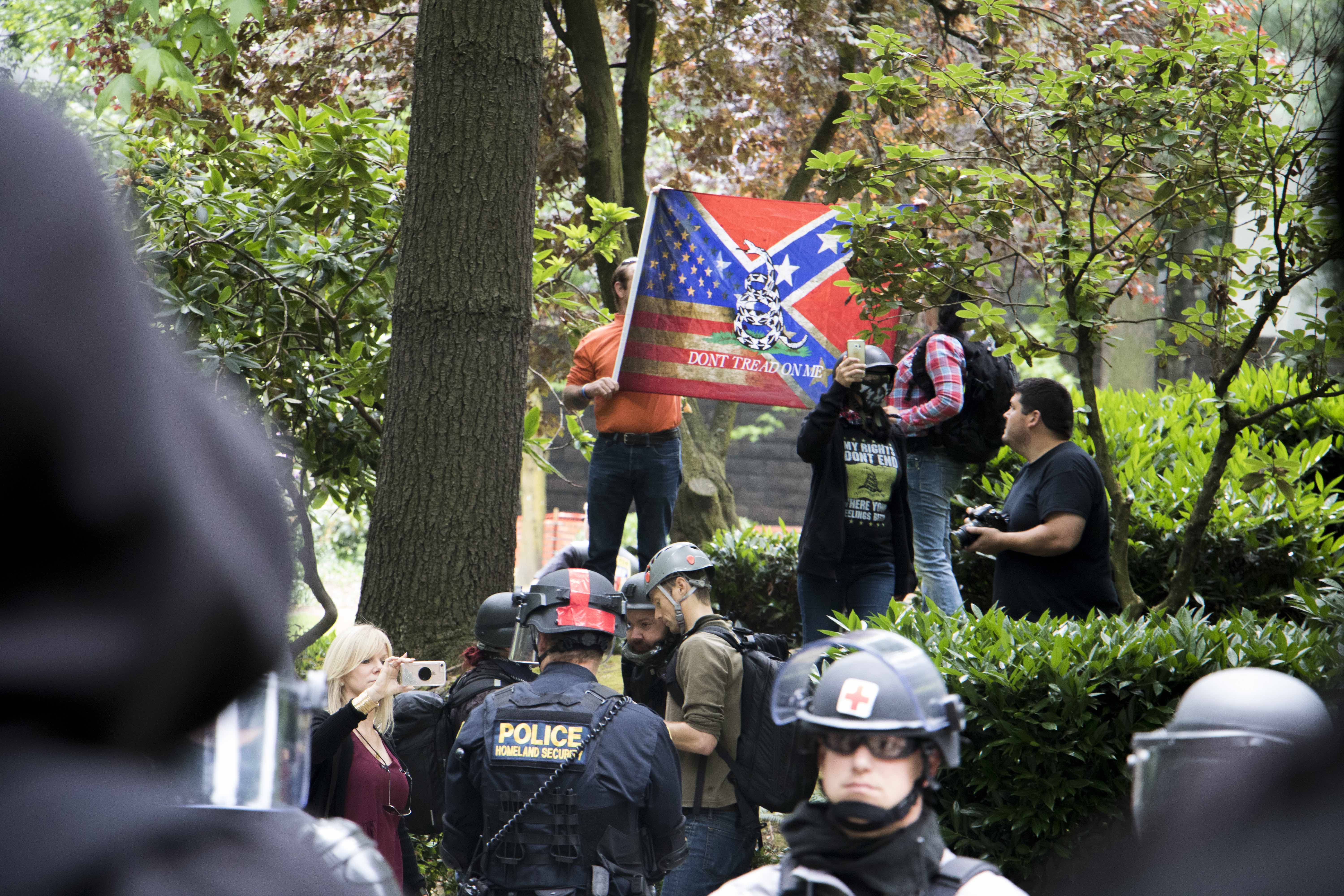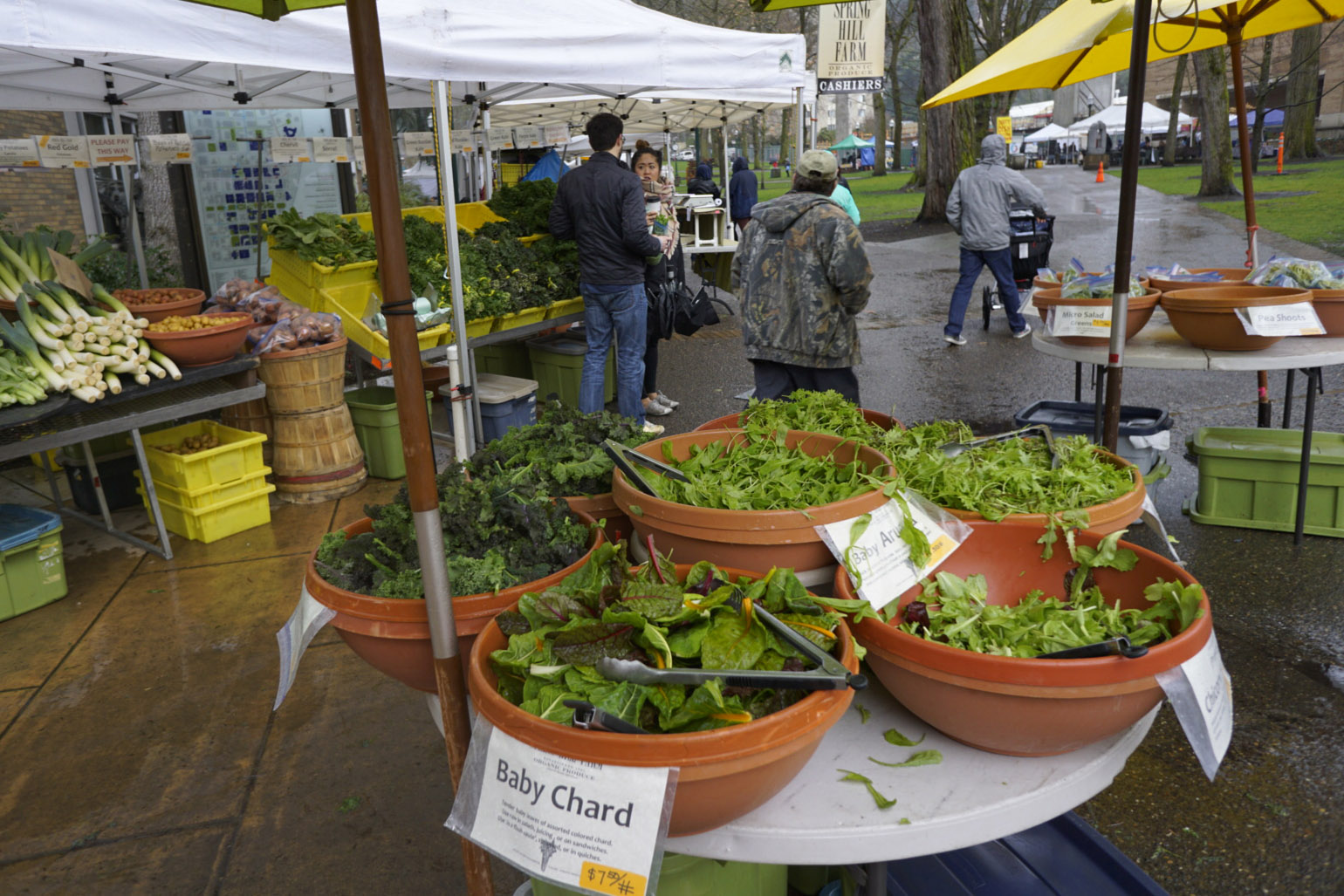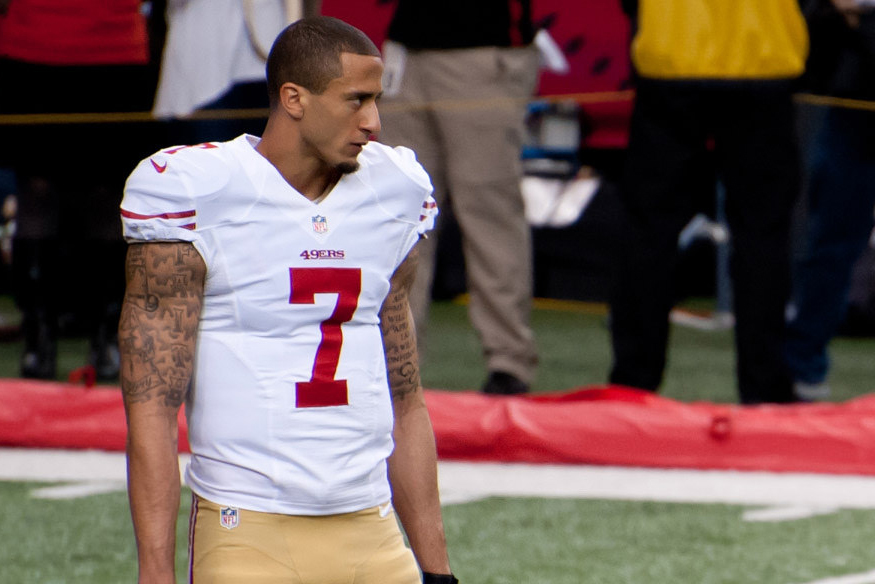Portland’s pro-Trump, anti-fascist, and anti-hate rallies on Sunday, June 4 were not quite what the city was expecting.
A few hundred Trump supporters gathered in Terry Schrunk Plaza in downtown Portland to support “free speech” and listen to alt-right and white supremacist celebrities speak. The attendees were dwarfed by black-clad anti-fascist protesters crowding Chapman Square, violence-condemning anti-hate ralliers in front of City Hall, and union groups chanting non-stop on the sidewalk in front of the Edith Green-Wendell Wyatt Federal Building.
A bicycle group circled Schrunk Plaza for a couple of hours, chanting “Go home, Nazis.”
Reactionaries from all sides screamed slurs and threats of violence over cops’ heads and across the streets. There were white power tattoos and “Make America Great Again” hats and black bloc clothing. People circled Chapman square and Schrunk plaza selling Black Lives Matter t-shirts. Trump ralliers commanded immigrants to go back to their countries.
After all that, however, and some upset on the south border of Chapman Square, a rain of pepper balls, tear gas, and flash bangs from police forced anti-fascists out of Chapman and north-bordering Lownsdale Park. Antifa protesters formed a march in the streets, only to be cornered by police and detained.
Over 100 people were then photographed and told to go home, including at least a dozen journalists, myself included.
Fourteen people were arrested. A spokesman for Portland Police said they felt “things went pretty well.”
What Portland expected
After white supremacist Jeremy Christian threatened two teenage women of color on a MAX train and stabbed three men, Portland Mayor Ted Wheeler pleaded with organizers of the Trump Free Speech rally to reschedule their event. “Our city is in mourning, our community’s anger is real, and the timing and subject of these events can only exacerbate an already difficult situation,” Wheeler wrote on Facebook. Christian had been kicked out of an April 29 free speech rally led by the same organizer, Joey Gibson.
The LA Times and Willamette Week both predicted “violence” to come to Sunday’s rallies, especially because Gibson, who identifies as a Libertarian and Christian, invited Kyle Chapman to speak at the Trump Rally.
Chapman is known popularly as “Based Stick Man” for beating an anti-fascist protester with a stick in Berkeley earlier this year. Three days before the Portland rally, Chapman urged his Twitter followers to “smash” anti-fascists “on sight” and declared an “open season on antifa.” Twitter removed the post.
The Portland Police Bureau took online threats of violence seriously, warning participants to leave weapons at home and telling the public to expect severe traffic delays. PPB never specified which groups they expected violence to come from, but Public Information Officer Sgt. Pete Simpson told the Vanguard the Bureau expected upheaval from anti-fascist protesters.
“We didn’t want anyone [in the antifa] group to gain momentum like we saw on May Day,” Simpson said. Twenty-five protesters were arrested on May Day for disorderly conduct or riot, and some of the protesters committed vandalism and property destruction.
What happened Trump-side
Barring screaming agitators on the north, east, and west edges of Schrunk plaza, the inside of the Trump Rally felt like a white rural American 4th of July picnic. A country group twanged proud music. A man handed out tiny American flags on wooden sticks, and toddlers ran in circles at the base of the stadium and kicked a stars and stripes beach ball high in the air. Men in fresh haircuts and polo shirts brought their lookalike sons.
A teenager shouted, “Go back to Venezuela. Go back to Mexico. Fuck you” across SW 4th Avenue to anti-hate rally attendees. An older man intervened and told him not to use curse words, then added, “but I understand the sentiment.”
Chapman showed up in a grey sweatshirt and “Make America Great Again” cap. Though not dressed for battle in his signature baseball helmet and arm shields, I filmed Chapman telling his livefeed followers they might need to “shed blood” or “do time” in order to advance the free speech movement.
Before Sunday’s rallies, Joey Gibson said “I’m not far right, I’m a libertarian.” Several interviewees, including one hailing a ‘Kate Brown is a liar’ sign that went on a tirade about the media unfairly connecting Jeremy Christian to Republicans, publicly separated themselves from Christian’s ideologies. A woman called ‘LaDon’ said Christian “was a mentally ill man.”
LaDon also insisted there were no white supremacists at the rally. John ‘Based Trojan’ Turano wore his signature foam-lined plastic armor and American flag board shorts. A “White Pride” tattoo was visible on his right bicep. “I look over [at antifa protesters] and I just want to smash,” Turano, who goes by the alias of Pat Washington, told The Guardian.
Jake Von Ott, a 19-year-old Identity Europa coordinator, seen shaking hands with Jeremy Christian at the April 29 rally, told Al Jazeera his organization was not made up of white supremacists, but rather “white identitarians.” Gibson previously told his Facebook followers that Identity Europa, along with Nazis and KKK, would not be allowed at the rally.
A couple of arrests were made at Terry Schrunk Plaza, but the event remained peaceful, if loud. Several images, however, surfaced of an Oath Keeper, or alt-right militia group member in a camouflage flak vest assisting Federal Protection Officers making an arrest. The Oath Keeper even pulled a thick yellow zip tie from the officer’s uniform.
PPB’s Public Information Officer Sgt. Pete Simpson said that, indeed, sometimes citizens help to make arrests if a suspect is struggling. “I cannot recommend whether it is a good idea or not,” Simpson added. Because the Oath Keeper did not assist a PPB officer, Simpson could not comment further. The Feds say they are investigating the militia member’s actions.
Freelance journalist Leah Sottile alleged that a member of the Three Percenters Movement, another alt-right militia group, told her where she “could and couldn’t walk.” The same Oath Keeper assisting FPS was seen holding back crowds as Trump ralliers left.
What went down in antifa-land
At least one Trump rallier crossed the border to Chapman square to speak with counter protesters. Antifa responded with a megaphone siren until the rallier left. Another young Trump rallier, apparently present with his parents, waved a black and blue American flag, representing fallen police officers, to the north in Lownsdale Park. Black-clad opponents told him, “You realize by being here you’re antagonizing us.” The youth lowered his flag, apologized, and told his approachers he intentionally came to Lownsdale Park to respect gatherers in Chapman Square.
Two or three black bloc members then snatched the flag and ran to the center of Lownsdale Park. Police stood by but did not intervene.
“It doesn’t even matter,” the youth said. He was embraced by an older woman wearing a “Let Milo [Yiannopoulos] speak” t-shirt.
Chapman Square was filled to the brim with black-clad protesters, often yelling at police guarding Chapman’s south border as much as they told Trump-supporter “Nazis” to “go home.” Posters outed white supremacist and alt-right leaders supposedly attending the Trump rally and were seen on Facebook and throughout the city.
Volunteers passed out ice cream bars. A woman held a Tupperware of sliced strawberries over her head. “You need strawberries? I have strawberries,” she chanted. The same woman passed out bottles of Maalox after police deployed tear gas in order to assist in clearing the irritant from eyes.
One rallier waved a cardboard sign that read, “Violence is never the answer.” Though dressed in black, the rallier said she did not represent antifa and would not be staying after the rally. “I do see a difference between property destruction and physically hurting someone,” she said, but added that she did not feel either were effective tools against alt-right or police actions.
Tensions grow
The majority of event attendees in Chapman square, as well as other ralliers surrounding Schrunk plaza, were peaceful. Several participants in the anti-hate rally stressed it was important for them to be there as “physical embodiments” of resistance to alt-right ralliers.
The most tension could be felt on SW Madison Street, in between the Antifa and Trump rallies. PPB alleged that antifa ralliers began throwing projectiles at police, and at that point they needed to create more distance between the two groups.
“The tension from [antifa] was certainly higher than that from the other groups combined,” Simpson said. “There were instances of people shooting marbles and throwing projectiles. That’s the point at which we were concerned about that group trying to go into Schrunk Plaza.”
The Vanguard witnessed at least one firework thrown at police, as well as water and water bottles. Police allege bricks were also thrown, though this could not be independently verified by journalists. PPB posted pictures of confiscated whole and broken bricks, sticks, poles, one set of brass knuckles, several hammers and pocket knives, chains, and a case of canned Pepsi.
Here come the blue
Around 3:30 p.m., police announced that the south side of Chapman Square was closed “due to criminal activity.” Ralliers were urged to move to the center of the park. Many of the ralliers stalled, and people began to fill SW 3rd Avenue.
Then a cascade of flash bangs and tear gas erupted as riot-clad officers rushed the park. Gregory McKelvey, founder of Portland Resistance, alleged he was shoved in the back by a police baton and rubber bullets were deployed in the center of Chapman.
Antifa then used paper stands and “street closed” signs to barricade officers from their group. After a 15–20 minute standoff, the crowd began marching in the middle of SW 4th Avenue going north.
Riot police began leaving on vehicles and heading west, then north, to get ahead of the marchers. When McKelvey, on his Twitter live feed, realized officers were going to corner marchers, the panic in his voice was obvious.
As marchers barreled down the street they chanted, “Whose streets? Our streets.”
More than 100 detained, journalists included.
On the way to SW 4th and Morrisson, marchers neither vandalized nor destroyed any property. Shoppers gaped from inside the Apple store windows. Other business managers locked their doors. Black bloc marchers tried to throw more barricades in the street but found a stack of street-side barricades to be locked up with chains.
Riot police assembled first on SW Alder, then on SW Morrison. Marchers and journalists came to a halt. Police announced overhead the crowd was “being detained for the purpose of investigation of disorderly conduct.”
“As soon as people began marching in the street it became an unlawful assembly,” Simpson told the Vanguard. That meant, possibly, police could have warned the crowd of arrest earlier.
However, then PPB announced two more times that the crowd needed to disperse or be subject to arrest. The marchers roared. I was shoved to the left, then to the right as the crowd found they were surrounded on all four sides. I ran straight into a riot policeman posing in front of the Starbucks.
The crowd chanted, “Let us leave.”
PPB then confirmed overhead, again, that the crowd was being detained.
A marcher tried to leave through the parking garage across the street from Starbucks. They were peppered with rubber bullets at close range.
Volunteers spread sharpies throughout the crowd, and marchers rushed to write the National Lawyer’s Guild jail support line number on their arms. I had not thought I would need this number, but I took it down. A woman tried to write the number down, but her hands were shaking. “That’s a 9, not a 7,” I told her. “You are not going to remember that later if you do not fix it now.”
Bottles of Maalox and milk, clothing, and bottles of pepper spray were discarded on the sidewalk. “It kind of tells you that was the issue we were trying to prevent,” Simpson said, adding that officers picked out pocket knives and blunt objects as well.
A PPB officer told me my editor could identify me after I was processed, but he could not let me out of the detainee section or it would start a “stampede.” Freelance journalist Mike Bivins said the last time he had been detained in a crowd, he was released without incident. “Not this time,” he said on Twitter.
Aaron Mesh, a Willamette Week news editor, said PPB Commander Westbrook told him “it was their fault for being on the streets” when PPB declined to release his reporters. Pamplin Media Group photographer Josh Kulla said police would not answer any questions, much less release him.
PPB Officer Roeser told a detainee that even those on the sidewalk could be charged with Disorderly Conduct in the Second Degree for blocking traffic.
Though only four arrests were made, each detainee had their picture taken and identifications reviewed before being told to leave the area or be subject to arrest.
This meant journalists could not keep documenting the events without the threat of arrest.
“It is never our intention or desire to detain journalists,” Simpson said. Then he added, “I heard from some officers that journalists actually wanted to stay inside” to keep documenting. Simpson quickly added, “That may not have been universal.”
Portland predicts this is not the end
This time around, 11 fewer arrests took place for a much larger gathering of people than May Day. But Micah Fletcher, the sole survivor of Christian’s stabbings, told Portland in a KGW-8 interview, “We’re about to go through a very hard time. The world is changing.”
Mat Dos Santos of the American Civil Liberties Union called PPB’s actions on Sunday “unnecessary and excessive use of force.” Santos claimed that detainees were not legally required to show ID and that PPB may have broken federal law if they kept the pictures they took.
McKelvey is calling his Twitter followers to “recall” Ted Wheeler’s mayorship.
Portland’s predictions for Sunday’s protests may have been off, but PPB’s swift action, supposedly to “diffuse the energy” in Simpson’s words, have not diffused any long-term resistance attitudes in the city.






